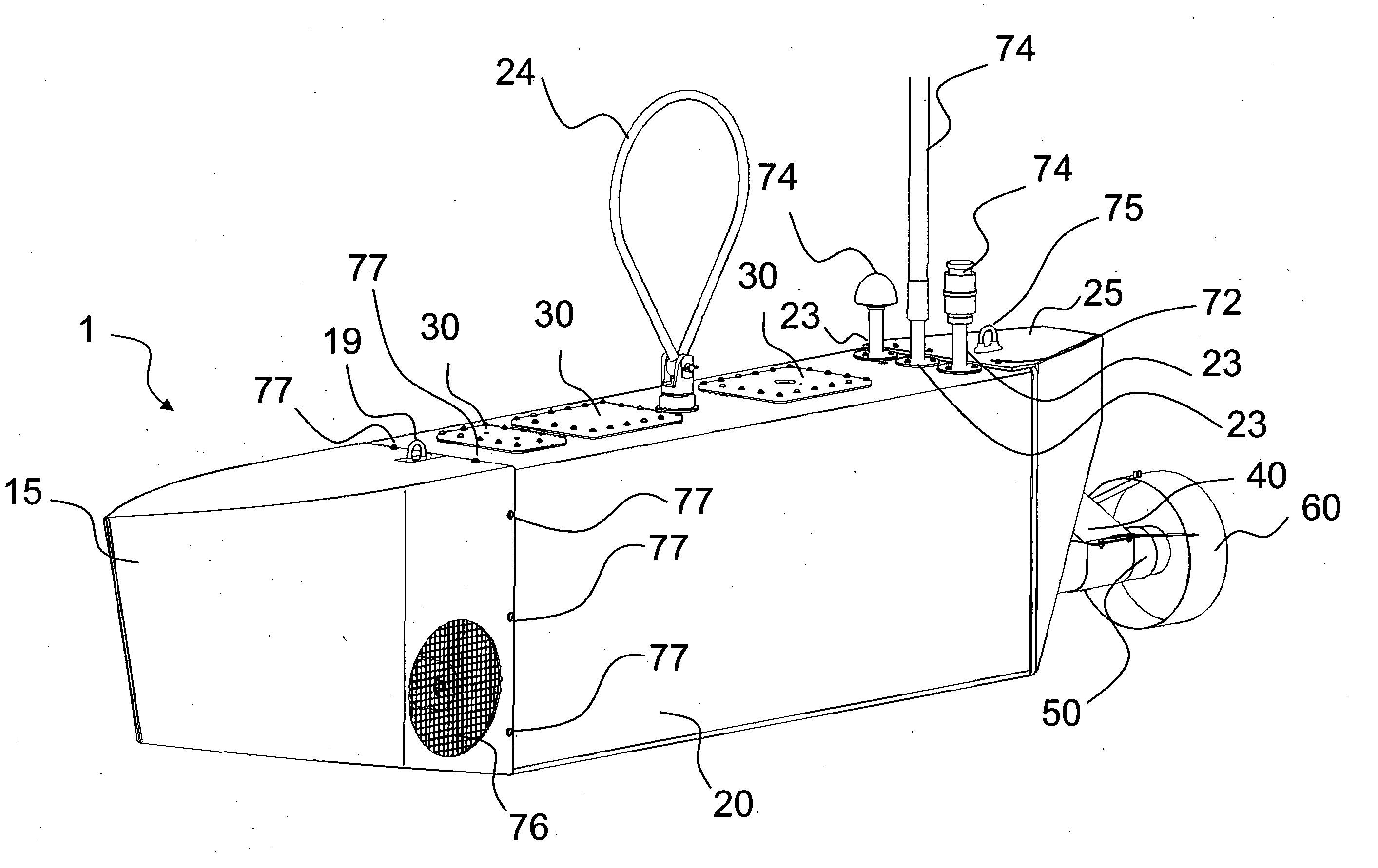Autonomous water-borne vehicle
a water-borne vehicle, autonomous technology, applied in the direction of instruments, vessel construction, distance measurement, etc., can solve the problems of unsuitable unmanned operations, unsuitable equipment and sensors, and unsuitable vehicles, and achieve the effect of limiting winch operation
- Summary
- Abstract
- Description
- Claims
- Application Information
AI Technical Summary
Benefits of technology
Problems solved by technology
Method used
Image
Examples
Embodiment Construction
[0072]4.1. Hull Configuration
[0073]FIG. 1. is a diagram of a vessel 1 according to an embodiment of the present invention. The vessel is made up of hull segments including a free-flood nose fairing 15, a sealed center section 20 and a free-flood aft fairing 25. An aft thruster 50, mounted on a thruster mounting 40 and using a thruster fairing 60, provides forward thrust. The bow thruster tunnel 76 holds a forward thruster that provides steering. Bolt holes 77 at the forward bulkhead of the sealed center section accept bolts fastening the nose fairing to the center section. Bolt holes 72 at the aft bulkhead of the sealed center section accept bolts fastening the aft fairing to the center section. Removable water tight ports 30 provide access into the sealed center section. A lift ring 24 provides a single point for lifting the entire vessel. A tow point 19 at the forward end provides a single point for towing the vessel. A tie point 75 at the aft end provides a point for guiding the ...
PUM
| Property | Measurement | Unit |
|---|---|---|
| Power | aaaaa | aaaaa |
Abstract
Description
Claims
Application Information
 Login to View More
Login to View More - R&D
- Intellectual Property
- Life Sciences
- Materials
- Tech Scout
- Unparalleled Data Quality
- Higher Quality Content
- 60% Fewer Hallucinations
Browse by: Latest US Patents, China's latest patents, Technical Efficacy Thesaurus, Application Domain, Technology Topic, Popular Technical Reports.
© 2025 PatSnap. All rights reserved.Legal|Privacy policy|Modern Slavery Act Transparency Statement|Sitemap|About US| Contact US: help@patsnap.com



